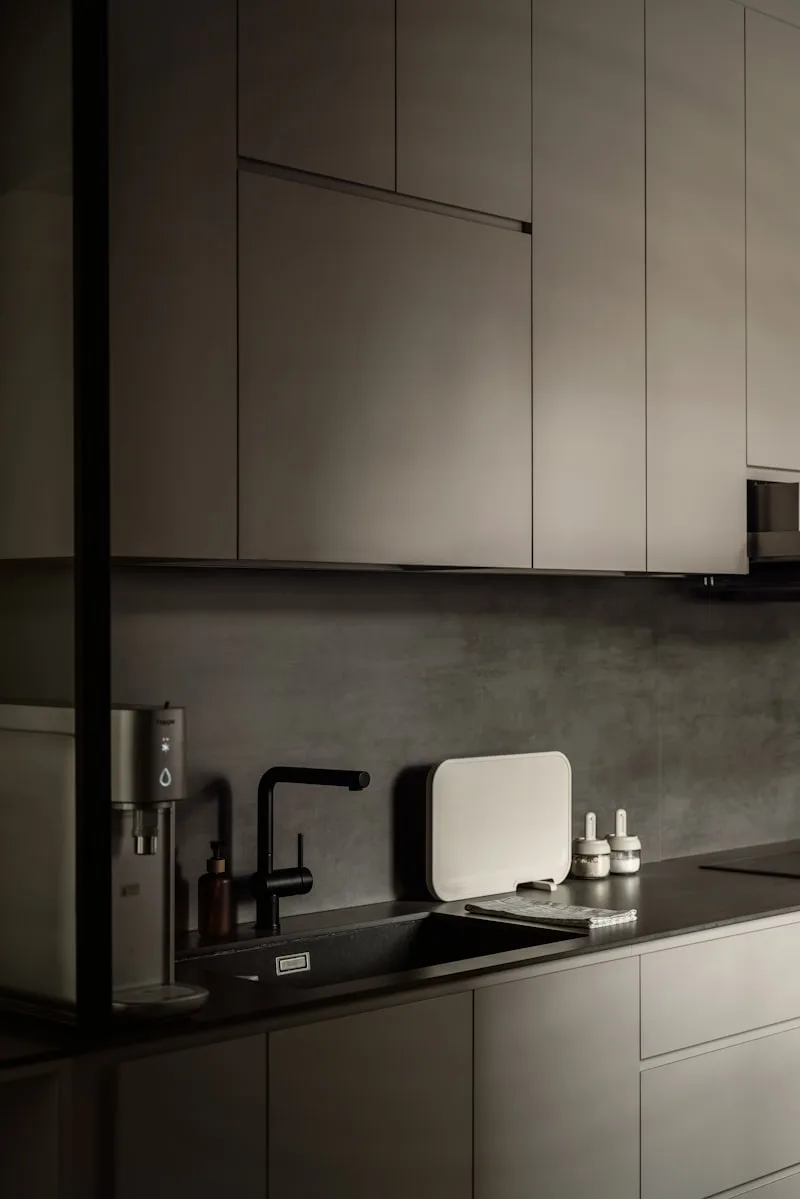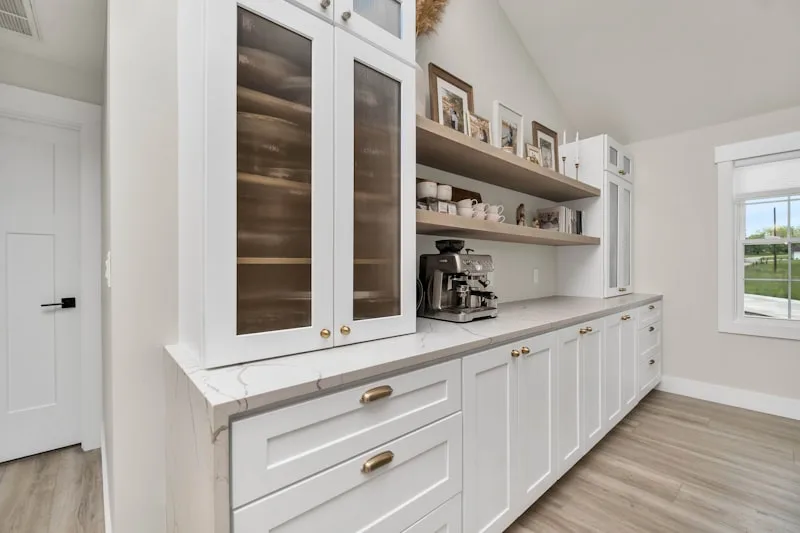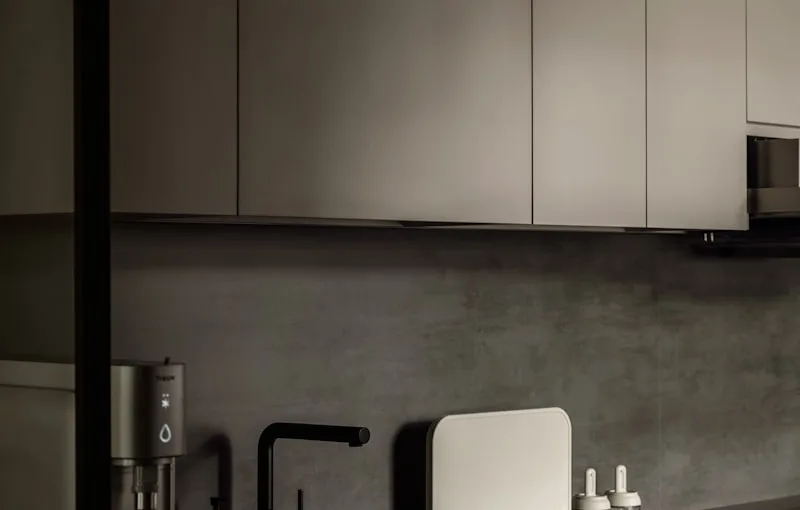Before you dive in, prep work is key. Remove all the cabinet doors and hardware. It’s like giving your cabinets a fresh start! Clean them thoroughly to remove grease and grime; nobody wants a sticky finish. Once they’re clean, lightly sand the surfaces to help the paint stick better. It’s like giving your cabinets a little exfoliation!
Now, let’s talk about priming. Applying a primer is like laying a solid foundation for a house. It ensures that your paint adheres well and provides a uniform base. Use your sprayer to apply a thin coat of primer, and don’t forget to let it dry completely. This step is crucial—impatience can lead to a messy finish!
When it’s time to paint, think of it as giving your cabinets a fresh coat of confidence. Choose a high-quality paint that suits your style—whether it’s a bold color or a classic white. Spray in thin, even coats, keeping the sprayer about 6-12 inches away from the surface. This distance is your secret weapon to avoid drips and runs.
As you spray, move in a smooth, sweeping motion, almost like you’re painting a masterpiece. And remember, patience is your best friend here. Allow each coat to dry before applying the next. Before you know it, your kitchen will be transformed, and you’ll be the proud owner of beautifully sprayed cabinets!
Transform Your Kitchen: A Step-by-Step Guide to Spraying Cabinets Like a Pro
First things first, prep is key. Just like a painter wouldn’t start without a canvas, you shouldn’t jump in without getting your cabinets ready. Remove all the hardware and give those surfaces a good clean. Think of it as giving your cabinets a spa day—scrub away the grime and grease, and let them shine!
Next, it’s time to sand. Grab some fine-grit sandpaper and lightly scuff the surfaces. This step is like giving your cabinets a little rough love, helping the paint stick better. Don’t worry; you don’t need to sand them down to bare wood—just enough to create a good grip for the paint.

Now, let’s talk about the spray paint. Choose a high-quality paint designed for cabinets. It’s like picking the right outfit for a big event; you want something that looks great and lasts! When you’re ready to spray, hold the can about 10-12 inches away and use smooth, even strokes. Think of it as a dance—fluid and graceful.
After the first coat dries, don’t skip the second! This is where the magic happens, giving your cabinets that professional finish. Once everything is dry, reattach the hardware, and voilà! You’ve just transformed your kitchen into a space that feels brand new. Who knew a little spray paint could work wonders?
Spray Painting Kitchen Cabinets: Tips and Tricks for a Flawless Finish
First off, preparation is key. Just like you wouldn’t bake a cake without measuring your ingredients, you shouldn’t start spraying without prepping your cabinets. Remove all the hardware and clean the surfaces thoroughly. A little soap and water go a long way, but don’t forget to sand them lightly. Think of sanding as giving your cabinets a mini spa day; it helps the paint stick better!
Next, choose the right paint. Not all paints are created equal, especially when it comes to kitchen cabinets. Look for a high-quality, durable paint that can withstand the hustle and bustle of daily life. It’s like picking the right outfit for a big event—you want something that looks good and lasts!
When it’s time to spray, make sure you’re in a well-ventilated area. You don’t want to be inhaling fumes like you’re at a paint party! Hold the spray can about 10-12 inches away from the surface and use smooth, even strokes. Think of it like brushing your hair—smooth and steady wins the race!
Lastly, patience is your best friend. Allow each coat to dry completely before applying the next one. It’s tempting to rush, but remember, good things come to those who wait. With these tips in your back pocket, you’re well on your way to achieving that stunning, professional-looking finish on your kitchen cabinets!
Revamp Your Space: The Ultimate DIY Guide to Spraying Kitchen Cabinets
First things first, let’s talk about prep work. Think of it as laying the groundwork for a masterpiece. Start by removing all the cabinet doors and hardware. This is your chance to declutter and clean those hidden nooks and crannies. A good scrub with some soapy water will do wonders. Once everything’s squeaky clean, it’s time to sand. This step is crucial because it helps the paint stick like glue. Imagine trying to paint a wall without priming it first—yikes!
Now, onto the fun part: choosing your paint! You want something durable, especially in a kitchen where spills are a daily occurrence. A high-quality spray paint designed for cabinets will give you that smooth, factory-finish look. When you’re ready to spray, make sure you’re in a well-ventilated area. Think of it as creating your own little paint booth. A few light coats are better than one heavy one—trust me, it’ll save you from drips and runs.
As you spray, channel your inner artist. Move the can in smooth, even strokes, and don’t rush it. It’s like dancing; you want to find that rhythm. Once everything is dry, reattach the hardware, and voilà! You’ve just transformed your kitchen without breaking the bank. Your cabinets will look brand new, and you’ll feel like a DIY superstar!
From Drab to Fab: How to Achieve a Professional Look When Spraying Kitchen Cabinets
First off, let’s talk about prep work. Think of it as laying the foundation for a beautiful house. You wouldn’t build a mansion on shaky ground, right? Start by removing all the cabinet doors and hardware. Give them a good clean to remove grease and grime—this step is crucial! Imagine trying to paint a canvas that’s covered in dirt; it just won’t work. Once they’re clean, lightly sand the surfaces to help the paint stick. It’s like giving your cabinets a mini spa day!
Now, onto the fun part: spraying! Choose a high-quality spray paint designed for furniture. This isn’t just any paint; it’s your secret weapon for achieving that professional look. When you spray, keep the can about 10-12 inches away from the surface. Think of it like holding a microphone—too close, and you’ll get distortion; too far, and you won’t be heard. Use even strokes and don’t rush; patience is key here.
After the first coat, let it dry completely before applying a second. This is where the magic happens! Each layer builds depth and richness, transforming your cabinets into a stunning focal point. And don’t forget to reattach the hardware! New knobs or handles can be the cherry on top, giving your kitchen that polished, professional finish.
The Art of Spraying Kitchen Cabinets: Essential Tools and Techniques You Need to Know

First off, let’s talk tools. A high-quality paint sprayer is your best friend here. Think of it as your magic wand; with a flick of your wrist, you can achieve a flawless finish. Look for an airless sprayer or a HVLP (High Volume Low Pressure) sprayer. These options give you control over the paint flow, allowing you to cover every nook and cranny without drips or runs. Don’t forget to grab a good primer, too! It’s like the foundation of a house—essential for a long-lasting finish.
Now, onto techniques. Preparation is key! Start by removing all the cabinet doors and hardware. It’s like decluttering your mind before a big project; you’ll work more efficiently. Clean the surfaces thoroughly to remove grease and grime—nobody wants a sticky finish. Sanding is also crucial; it’s like giving your cabinets a fresh start, creating a surface that paint can cling to.
When you’re ready to spray, practice on a scrap piece of wood first. This is your rehearsal, ensuring you’ve got the technique down. Hold the sprayer about 6-12 inches from the surface and move in smooth, even strokes. Think of it like painting a canvas; consistency is key to achieving that professional look.
Finally, patience is a virtue. Allow each coat to dry completely before applying the next. It’s like waiting for a fine wine to age—good things come to those who wait! With these tools and techniques in your arsenal, you’re well on your way to kitchen cabinet perfection.
Frequently Asked Questions
What Type of Paint Should I Use for Spraying Cabinets?
For spraying cabinets, use a high-quality acrylic or water-based paint designed for furniture. These paints provide a smooth finish, quick drying time, and easy cleanup. Ensure the paint is suitable for the material of your cabinets and consider using a primer for better adhesion and durability.
How Do I Prepare Kitchen Cabinets for Spraying?
To prepare kitchen cabinets for spraying, start by removing all hardware and doors. Clean surfaces thoroughly to eliminate grease and dirt. Sand the cabinets lightly to create a smooth surface for better paint adhesion. Fill any holes or imperfections with wood filler and sand again. Finally, wipe down the cabinets with a damp cloth to remove dust before applying primer and paint.
What Safety Precautions Should I Take When Spraying Cabinets?
When spraying cabinets, ensure proper ventilation by opening windows and using fans to circulate air. Wear protective gear, including a mask, goggles, and gloves, to safeguard against fumes and overspray. Cover surrounding areas with drop cloths to prevent paint from settling on unintended surfaces. Follow the manufacturer’s instructions for the spray paint and consider using a spray booth for added safety. Always keep a fire extinguisher nearby and avoid using flammable materials.
What Supplies Do I Need to Spray Kitchen Cabinets?
To spray kitchen cabinets effectively, you will need a few essential supplies: a high-quality paint sprayer, primer, paint suitable for cabinets, painter’s tape, drop cloths to protect surfaces, sandpaper for surface preparation, a clean cloth for dust removal, and safety gear such as a mask and goggles. Ensure proper ventilation during the process for safety and optimal results.
How Do I Achieve a Smooth Finish When Spraying?
To achieve a smooth finish when spraying, ensure the surface is clean and properly prepped. Use high-quality spray paint and maintain a consistent distance from the surface while spraying. Apply multiple thin coats rather than one thick coat, allowing each layer to dry before adding the next. Use even, sweeping motions and avoid over-spraying to prevent drips and runs.
